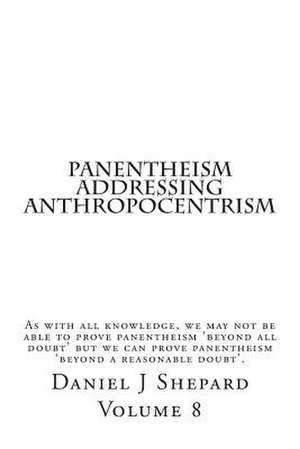Panentheism Addressing Anthropocentrism
Autor Daniel J. Sheparden Limba Engleză Paperback
Preț: 64.09 lei
Nou
Puncte Express: 96
Preț estimativ în valută:
12.26€ • 12.65$ • 10.23£
12.26€ • 12.65$ • 10.23£
Carte disponibilă
Livrare economică 05-19 martie
Preluare comenzi: 021 569.72.76
Specificații
ISBN-13: 9781503020757
ISBN-10: 1503020754
Pagini: 172
Dimensiuni: 152 x 229 x 9 mm
Greutate: 0.24 kg
Editura: CREATESPACE
ISBN-10: 1503020754
Pagini: 172
Dimensiuni: 152 x 229 x 9 mm
Greutate: 0.24 kg
Editura: CREATESPACE
